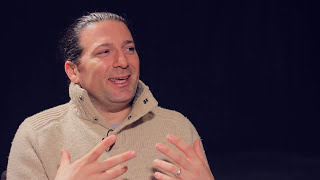In Chapter 16 of 16 in her 2011 Capture Your Flag, non-profit founder and executive Courtney Spence answers "What do you find most challenging about teaching creative students teamwork?" Spence shares how she teaches her creative student program participants teamwork. In her application process review and interview, teamwork is a top priority. Teams are sent abroad in challenging and often extreme conditions that require collaboration under pressure. Spence creates team leadership opportunities, for example in the producer role, as well as by training students to communicate in emotional and time sensitive environments. Spence is founder and executive director of Students of the World, a non-profit that partners with passionate college students to create new media to highlight global issues and the organizations working to address them. Spence graduated with a BA in History from Duke University.
Transcript:
Erik Michielsen: What do you find most challenging about teaching creative students teamwork?
Courtney Spence: In our process of application review, interview, we really – I mean it’s all about teamwork. How do you work with a team? Tell us about the challenges that you’ve met there because, you know, if they’re not comfortable working with a team, they’re certainly not gonna be comfortable working with a team in the West Bank, like it’s, you know, the stakes are a lot higher, and we have, you know, really, I think, done a very good job of finding the individuals that prefer to work in teams. I would say overall that my sense of the millennial generation is that they – they do prefer teamwork.
They’re not as comfortable with hierarchy, and this is a leader, and this not. For a long time we didn’t have specifically designated roles because the feedback we were getting from students is they didn’t wanna feel like there was a hierarchy in the team and they wanted it all, you know, we’re all in this together, which is still more or less how we operate. We have someone that is the producer that sort of makes sure every – all the trains run on time or at least as close to on-time as we can get them to run, you know, make sure people are, you know, happy, dealing with team dynamics, so they are, you know, in a way of the team leader, but even still we call them the producer, and there’s really, you know, opportunities for leadership in our seven-person teams in various ways.
I think what we offer them in training and as we go through the production and post production is how to anticipate problems that are coming up in the team. How to open lines of communication, you know, among people that might not always be comfortable communicating about how they are reacting on an emotional level. You know, we really encourage lots of daily meetings and communication, and, you know, when you’re in the places where we work, when you’re seeing the kind of poverty, and disease, and things that, you know, we don’t get exposed to on a daily basis generally here in the U.S., the emotional reactions and the emotional kind of rollercoaster that you go through when you’re on these productions is really dynamic because on one hand you’re working with people that basically will be your friends for life. You’re working with, you know, individuals that will provide inspiration for you for the rest of your life, I guarantee it, but you’re also seeing, you know, some really severe problems, and some really, you know, things that are wrong in this world. And so if you’re not working as a team, if you’re not communicating, it’s gonna be ugly. And so we do a lot of training with them upfront, but I would have to say that they more or less know how to do that, we just sort of give them the tools and the best practices to really maximize their teamwork, and its worked out really well.























